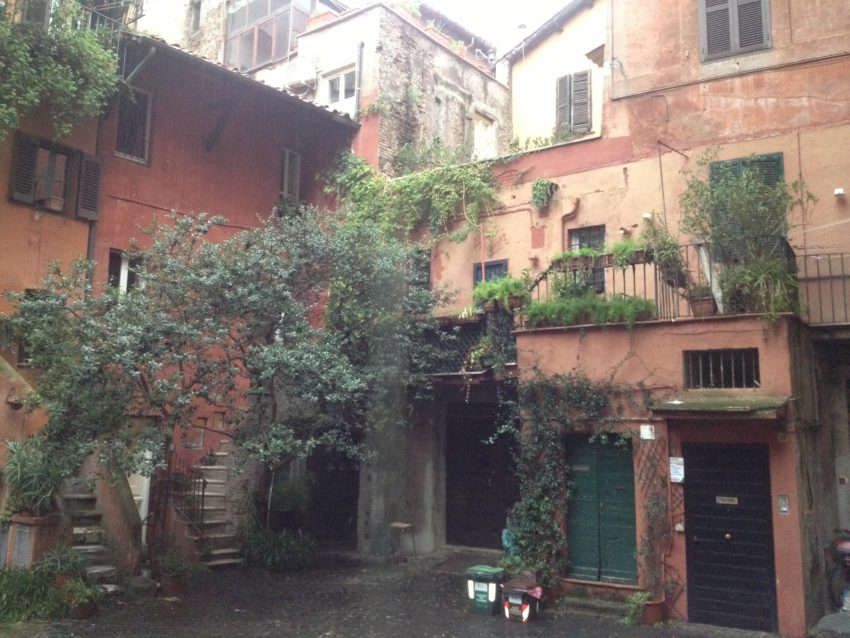Arco degli Acetari a slice of Rome preserved from Middle Ages

I have traveled so much in 2015, I may have forgotten my roots. No, not Eugene, Ore. I mean Rome. I’ve put roots down in the mosh bog that is the banks of the Tiber River and I must let them grow. So I am making a point to start blogging more about my favorite city in the world and not fill this space by dashing off to Sri Lanka.
The rest of this summer and fall I will make periodic trips to little pockets of Rome few know about. This is a city of 4 million people that’s nearly 3,000 years old. Every day I discover something new. Not all of it is good. I just learned I need to buy three 80-centesimi stamps to send a postcard anywhere in the Western Hemisphere even though it only costs 2.30 euros. Rome, in its Third World wisdom, has no 2.30 stamp.
However, Rome also has little charming unknown corners like the one a corner kick from my old apartment near Campo dei Fiori. It’s a small square that has not changed much since the Middle Ages after the Roman Empire had collapsed and the city went through a roller coaster of facelifts. It’s on Via del Pellegrino, a narrow street one block south of Centro Storico’s main drag, Corso Vittorio Emanuele.
At the end of Pellegrino is an inconspicuous archway. When I walked through I felt like I walked onto a set of a Shakespearean theater. The square was ringed by two-story orange apartments. The view of each one was nearly blocked by small trees, ferns and planters on the iron-trussed balconies. A two-wheeled cart, the kind you might see in a Renaissance festival, sat next to a front door. The cobblestone pavement led to little windy staircases. The square even has a name: the Arco degli Acetari, named for the dealers of acetato, the mineral water that came from a spring north of Rome during the Middle Ages.
These houses have essentially not changed since the Middle Ages, from the 5th to 15th century AD. Some alterations were made in the 16th century and balconies were added. These squares were all over Rome until the end of the 19th century when Centro Storico was a main residential area and not the tourist trap that it has become.
During the Middle Ages, Rome’s population dropped from 1 million people at the height of the Roman Empire to about 20,000 during its decline. It’s hard to believe, but life around Centro Storico during the Middle Ages gave Rome a feel of a very large village. Squares like this gave me a glimpse of how quaint and simple life it may have been but also hide the violence, corruption and poverty that also marked those times.
When the Italian nation formed in 1871, Rome’s population exploded. Many buildings and courtyards were leveled for the sake of tourism. However, this little square near my old home is preserved. I’m glad I was able to share this little corner of Rome with my readers.
That’s because I’m leaving for work in Rio de Janeiro on Thursday.


July 25, 2015 @ 8:47 am
I love that little nook! Happened by it just a couple of months ago. We are also guilty of not exploring Roma enough. Maybe after we get back from the U.S., where we will spend August in relative comfort.
July 25, 2015 @ 8:53 am
You should contact me and we can all meet for a glass of wine at a new discovered corner of Rome.
July 25, 2015 @ 9:21 am
In September! It’s a deal!